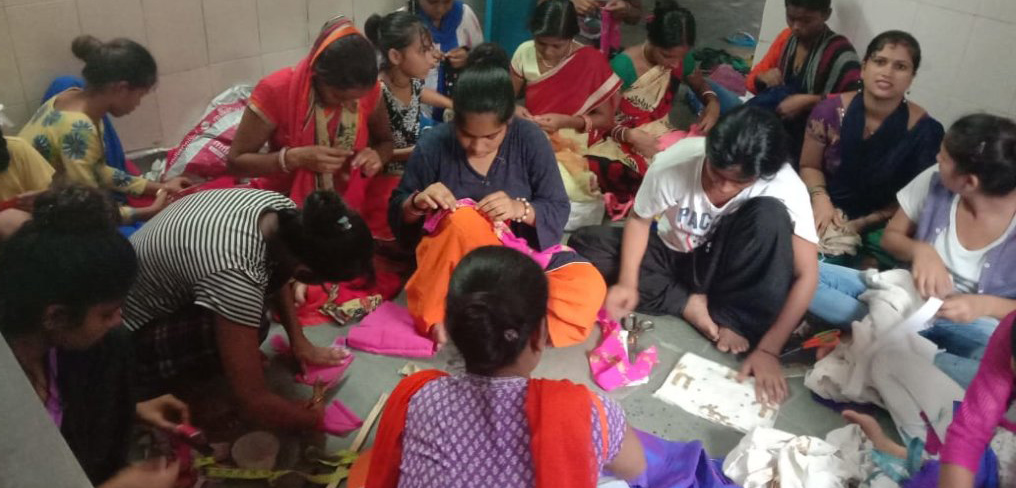- East Of Kailash, New Delhi-110065
- +91-11-26238444
- [email protected]
Welfare & Ladies Education

The status of women in India has been subject to many great changes over the past few millennia. From a largely unknown status in ancient times through the low points of the medieval period, to the promotion of equal rights by many reformers, the history of women in India has been eventful.
The term women’s rights refer to freedoms and entitlements of women and girls of all ages. These rights may or may not be institutionalized, ignored or suppressed by law, local custom, and behavior in a particular society. These liberties are grouped together and differentiated from broader notions of human rights because they often differ from the freedoms inherently possessed by or recognized for men and boys, and because activists for this issue claim an inherent historical and traditional bias against the exercise of rights by women and girls.
Only 9.2% of the households in India were female-headed. However, approximately 35% of the households below the poverty line were found to be female-headed. Though it is gradually rising, the female literacy rate in India is lower than the male literacy rate. Compared to boys, far fewer girls are enrolled in the schools, and many of them drop out. Only the states of Kerala and Mizoram have approached universal female literacy rates. According to majority of the scholars, the major factor behind the improved social and economic status of women in Kerala is literacy. In urban India, girls are nearly at par with the boys in terms of education. However, in rural India girls continue to be less educated than the boys.
Changes in intra-household decision-making. The evaluation concluded that there seemed to be a slight improvement in women's involvement in household decision-making in male-headed households, on such issues as credit, the disposal of household assets, children's education, and family health care. However, the traditional gender-based divisions persist in intra-household decision-making. Women basically decide on food preparation, and men make the financial decisions. But group members had become more aware of their property and political rights (which was part of group training). As in the case of mobility and social interaction, the evaluation again found greater improvements among women heads of households, older women, and more educated women.
The women welfare include female education, feminism, legal rights of women, pregnant patients rights, women in social and political, etc.
Ladies education is a catch-all term for a complex of issues and debates surrounding education (primary education, secondary education, tertiary education and health education in particular) for females. It includes areas of gender equality and access to education, and its connection to the alleviation of poverty. Also involved are the issues of single-sex education and religious education, in that the division of education along gender lines, and religious teachings on education, have been traditionally dominant, and are still highly relevant in contemporary discussion of female education as a global consideration.
Women's education in India has also been a major preoccupation of both the government and civil society as educated women can play a very important role in the development of the country. History of Women's Education in India: Although in the Vedic period women had access to education in India, they had gradually lost this right. However, in the British period there was revival of interest in women's education in India. During this period, various socio religious movements led by eminent persons like Raja Ram Mohan Roy, Iswar Chandra Vidyasagar emphasized on women's education in India. Mahatma Jyotiba Phule, Periyar and Baba Saheb Ambedkar were leaders of the lower castes in India who took various initiatives to make education available to the women of India. However women's education got a fillip after the country got independence in 1947 and the government has taken various measures to provide education to all Indian women. As a result women's literacy rate has grown over the three decades and the growth of female literacy has in fact been higher than that of male literacy rate.
Importance of Women's Education in India: Women's education in India plays a very important role in the overall development of the country. It not only helps in the development of half of the human resources, but in improving the quality of life at home and outside. Educated women not only tend to promote education of their girl children, but also can provide better guidance to all their children. Moreover educated women can also help in the reduction of infant mortality rate and growth of the population. Gender discrimination still persists in India and lot more needs to be done in the field of women's education in India. The gap in the male-female literacy rate is just a simple indicator.
On ladies welfare and education Navjivan Foundation has great rule since beginning and in this connection we have several camps and awareness on HIV/AIDS, population control, Avoid Early Marriage, Programme arranged on 2004, Eradication of Dowry, Eradication on sexual discrimination, 2005, Ladies education, Women’s rights, Self help group, Clothes distribution, Ladies to make friends club-save water-Good behave and spend time with music-dance-laugh for well physic and mentally fitness, for self depend one time kind donation and insist to animal husbandry, Breastfeeding 2006, Save Child life, Protest against sex test , Tuber Culosis, Refusing to tobacco, diabetes on 2007, Pregnant on spines, Asthmatic on 2008.











